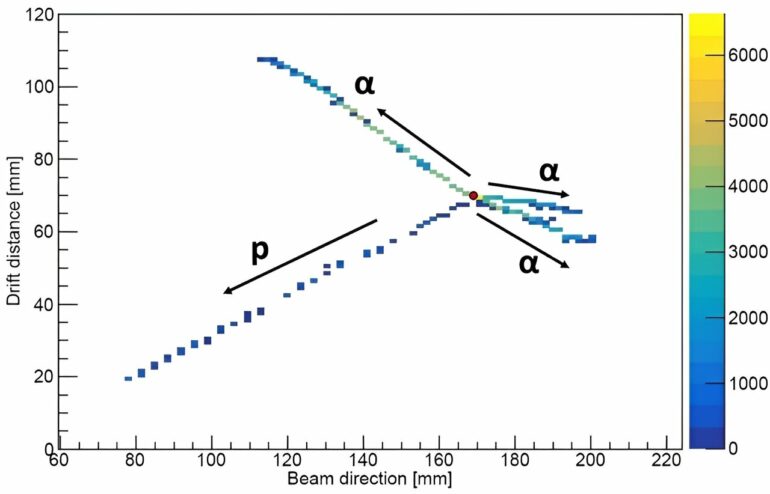Not all of the material around us is stable. Some materials may undergo radioactive decay to form more stable isotopes. Scientists have now observed a new decay mode for the first time. In this decay, a lighter form of oxygen, oxygen-13 (with eight protons and five neutrons), decays by breaking into three helium nuclei (an atom without the surrounding electrons), a proton, and a positron (the antimatter version of an electron).
Scientists observed this decay by watching a single nucleus break apart and measuring the breakup products. The study is published in the journal Physical Review Letters.
Scientists have previously observed interesting modes of radioactive decay following the process called beta-plus decay. This is where a proton turns into a neutron and emits some of the produced energy by emitting a positron and an antineutrino. After this initial beta-decay, the resulting nucleus can have enough energy to boil off extra particles and make itself more stable.
This new decay mode is the first observation of three helium-nuclei (alpha particles) and a proton being emitted following beta-decay. The findings can inform scientists about decay processes and the properties of the nucleus before the decay.
In this experiment, researchers used a particle accelerator known as a cyclotron at the Cyclotron Institute at Texas A&M University to produce a beam of radioactive nuclei at high energies (approximately 10% the speed of light). They sent this beam of radioactive material, oxygen-13, into a piece of equipment known as the Texas Active Target Time Projection Chamber (TexAT TPC).
The material stops inside this detector, which is filled with carbon dioxide gas, and decays after about ten milliseconds by emitting a positron and a neutrino (beta-plus decay). By implanting the oxygen-13 into the detector one nucleus at a time and waiting for it to decay, the researchers measured any particles that boil off following the beta-decay using the TexAT TPC.
Next, they analyzed the data with a computer program to identify the tracks the particles leave in the gas. This allowed them to identify the rare events (occurring only once per 1,200 decays) as those where four of the particles are emitted following beta-decay.
More information:
J. Bishop et al, First Observation of the β3αp Decay of O13 via β -Delayed Charged-Particle Spectroscopy, Physical Review Letters (2023). DOI: 10.1103/PhysRevLett.130.222501
Provided by
US Department of Energy
Citation:
Scientists make the first observation of a nucleus decaying into four particles after beta decay (2023, September 4)



